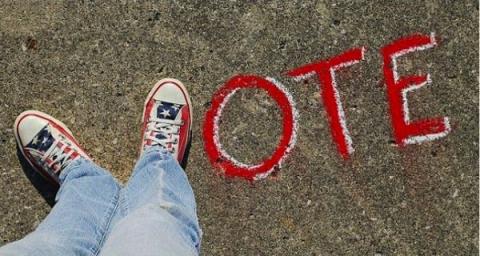CALIFORNIA - Opponents of California's top-two primary continue to argue that the new primary system "reduces voter choice" and has little to no effect on who is elected in California. They point to "Democrats still being elected in Democratic districts," and Republicans still being elected in Republican districts, as evidence that "nothing has changed."
It is these opponents, which include everyone from the Republican Party, Democratic Party, Libertarians, Greens, and all the consultants and activists associated with them, who are most strongly opposed to the new system. Even the media has bought into the carefully crafted talking points, referring to the new nonpartisan system as a "jungle primary," attempting to spin a negative connotation on a system that they describe as a "free-for-all."
The short-sighted lens of many party loyalists, consultants, and the media -- who tend to listen to them without question -- are wrong. Those with more than a data-driven-excel-sheet view of the world are starting to take notice of the real practical effect of the nonpartisan primary; one that isn't measured or reflected in the number of Ds and Rs that are or aren't elected.
The truth of the nonpartisan primary is that the consequences are not completely certain. The system may or may not produce moderates. More independent and third party candidates may or may not win elections. But, whatever the result, there is an undeniable shift in the accountability of whoever is elected.
Under the old system, candidates had small constituencies they were accountable to. In a Dem. or Rep. district, the majority party candidate was accountable the core base of supporters who vote in the primary. In a partisan district (which is most of them), the candidate that wins the majority party's primary wins the general election. Therefore, the candidate is only truly accountable to the voters who turn out to the partisan primary; those who are easily identified and likely to fall in line with whatever the party leadership says.
Under the new system, the dynamics are changed. The constituency today is the broader base of the electorate. A Democrat might appeal to voters who don't have Ds next to their name. They might find an organization, who would not have otherwise participated in an exclusively Democratic primary, have an incentive to support their candidacy. A conservative Democrat might find that he can attract enough independent and Republican votes to be competitive in a district that traditionally went to the party-backed, party-line Democrat.
In short, the race is now about representation of all voters, rather than a single party's voters. From the Sacramento Bee:
Early in 2012, with Glazer's aid, the California Chamber of Commerce's political action committee, Jobs PAC, targeted two Assembly Democrats – Betsy Butler from the Santa Monica area, and Michael Allen from Marin and Sonoma.Allen and Butler were liberals in a house dominated by liberals. But they stood out because they faced challenges from other Democrats – Richard Bloom, then Santa Monica mayor, and Marc Levine, then a San Rafael city councilman.The Chamber of Commerce sought to seize an opportunity by showing that the right type of Democratic challengers could knock off incumbents who cross business.
As a result of these new dynamics, party leadership faces new challenges. They have to compete for votes against organizations who represent alternative interests that have otherwise lost their voice in the old partisan-based arena.
The Chamber of Commerce sought to seize an opportunity by showing that the right type of Democratic challengers could knock off incumbents who cross business...The party and labor used to handpick candidates. The top-two primary system alters that equation. However, people with power don't willingly cede it, as it always has been.
